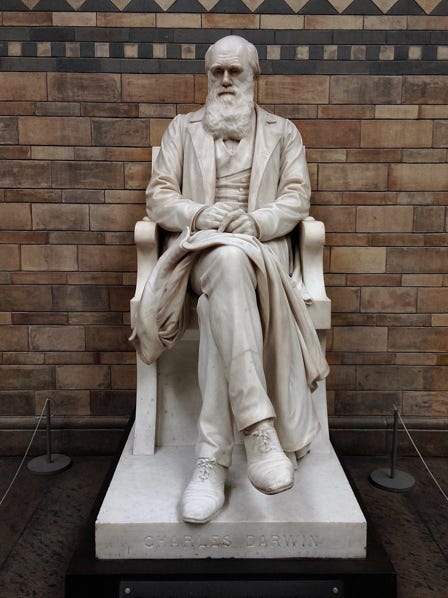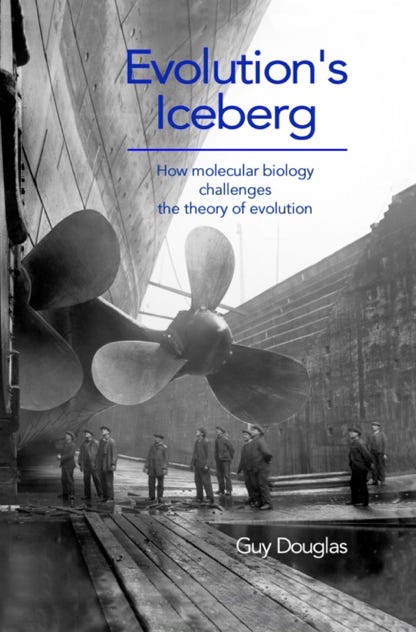A new book by
Guy Douglas
Shortly before midnight on Sunday 14th April 1912, RMS Titanic struck an iceberg in the North Atlantic and sank at 2.17 am. What made this tragedy particularly shocking at the time was that Titanic was widely believed to be unsinkable - by passengers, crew and by the public at large.
Today Darwin’s theory of evolution enjoys a similar “unsinkable” reputation in the public square.
The thesis of the book is that 19th century Darwinian science, developing as it did in an age that also gave rise to supreme confidence in Titanic’s unsinkability, has collided with the ‘iceberg’ of 21st century molecular biology. We conduct an inquiry into the evidence and its worldview implications.
What if?

RMS Titanic sank because five watertight compartments were punctured by the collision with the iceberg (she was designed to stay afloat if up to only four of the for’ard compartments had been breached). It was then a mathematical certainty that Titanic would sink as the water overflowed one bulkhead after another.
What if – just as design flaws rendered Titanic unsinkable only in a limited sense – what if the science underpinning the theory of evolution turns out to be valid only in a strictly limited sense?
The amazing discoveries in the late 20th and especially in the early 21st century – of the exquisite micro-molecular machinery and organisational complexity, together with the hierarchical layers of regulatory control systems inside living cells – have become Evolution’s ‘iceberg’.
Five failed predictions of neo-Darwinism
In this highly accessible account, we investigate five failed predictions of neo-Darwinism now that RMS Evolution has collided with the ‘molecular biology iceberg’. Just as Titanic sank because five watertight compartments were breached by the iceberg, we go down ‘below decks’ to inspect the damage inside five putatively watertight compartments—five different strands of evidence claimed to support the theory of evolution—the origin of life; the power of natural selection to invent; the fossil record; embryology and genetics; and human evolution.
The fundamental problem is INFORMATION
As we venture below decks to survey the damage to these five evolutionary predictions, we discover that, while genetic mutations and natural selection are indeed real phenomena, this Darwinian mechanism does not have the power claimed of it to generate the astonishing information content in DNA, proteins and in other biological building blocks. We discover that biological systems capable of even basic function (and there must be some level of functionality for natural selection to operate upon) are exceedingly rare and beyond the reach of random genetic mutations filtered by natural selection.














